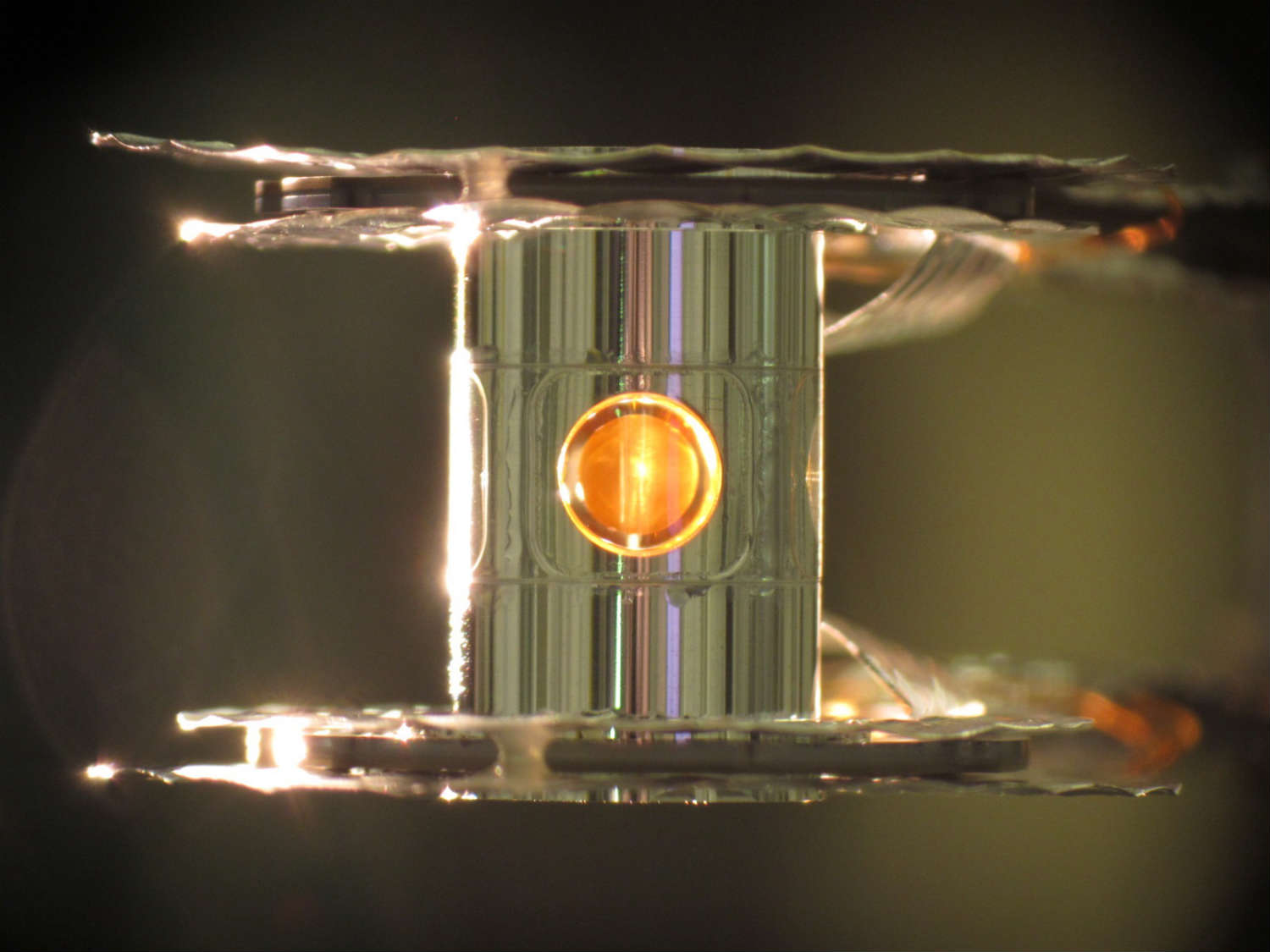
When physicists first split the atom in 1938, in the process known as nuclear fission, the feat led very quickly to the bombs that destroyed Hiroshima and Nagasaki and ended World War II. A mere decade or so later this destructive force had been tamed to power the first commercial nuclear power plants. In the late 1940’s, meanwhile, physicists forced atoms to combine against their will to create hydrogen bombs in what’s called nuclear fusion, and they thought they could follow up in the civilian sector. Fusion power planets, scientists predicted in the 1950’s, might be right around the corner.
That was just a tad optimistic. Controlled fusion—which amounts to taming the same awesome force that powers the Sun—has turned out to be much more difficult and more expensive than anyone guessed, and more than a half-century on nobody’s achieved it. Yet as a new paper just published in Nature makes clear, they haven’t given up. By focusing 192 powerful lasers on a tiny sphere encasing 170 millionths of a gram of hydrogen, scientists at Lawrence Livermore National Laboratory forced atomic nuclei to combine, releasing a whopping 17 kilojoules of energy. “It is not surprising,” writes physicist Mark Herrmann of Sandia National Laboratories in an accompanying Nature commentary, “that fusion scientists throughout the world are cheering.”
(MORE: Europe-based Fusion Project Draws Heat Over Funding)
This might sound a bit over the top when you consider how little hydrogen was involved, and how little power it actually released: 17 kilojoules represents the amount of solar energy that falls on a sq. yard (0.83 sq. m) of Earth (more or less) in full daylight over 17 seconds—and this fusion reaction lasted more like .0000000001 second.
“It sounds very modest,” admitted lead scientist Omar Hurricane at a press briefing. “And it is. But it’s closer than anyone’s ever gotten to ignition”—that is, the self-sustaining process where the fusion reaction can keep going on its own.
The reaction itself is simple: atomic nuclei carry a positive charge, so they try to repel each other. If you can overcome that repulsion and let them crash together and fuse, they release a burst of energy. And the way you do that, says Hurricane, is “you get them running toward each other at high velocity.”
Inside the Sun, that’s no problem. That high velocity comes from the 27-million-degree temperatures at the Sun’s core, which keep nuclei moving with enormous energy. Under other circumstances, most of the nuclei would just escape without colliding. But the enormous pressures created by the Sun’s gravity keep them confined indefinitely. Sooner or later, they crash.
(MORE: Going to Mars via Fusion Power? Could Be)
It’s no problem in an H-bomb either: hydrogen fuel is heated and compressed by an old-fashioned atomic bomb. The compression doesn’t last long, but the energy released in a fraction of a second is hundreds of times more powerful than an A-bomb. For a self-sustaining fusion reaction, you somehow need to get hydrogen very hot and keep it from escaping. That’s the tough part. One technique traps a gas of hydrogen atoms in a magnetic “bottle,” then heats the gas to millions of degrees with high-energy radio waves.
But the Livermore scientists have long focused on another method, known as inertial fusion. They bombard a spherical capsule of hydrogen with lasers from all directions, vaporizing the container itself and driving the hydrogen inward. “We need to compress the capsule by a factor of 35,” says Livermore physicist and co-author Debbie Callahan. The capsule itself is a fraction of an inch across, but the compression, she says, “is equivalent to compressing a basketball to the size of a pea.”
When that happens, the temperature shoots sky-high, the pressure reaches 150 billion times atmospheric pressure on Earth, and the hydrogen—more precisely, it’s a mixture of deuterium and tritium, which are heavier varieties of hydrogen—begins to fuse. “It’s quite ferocious,” says Hurricane.
It will have to get a lot more ferocious to deliver usable power, which would presumably come from blasting one capsule after another in unbroken succession. How long it will take to make a commercial reactor, says Hurricane, “is anybody’s guess. We’re working like mad, but this is research—it’s not a power plant, not a reactor.”
The same can be said for the magnetic confinement technique, whose most advanced experiment, the Joint European Torus (JET), briefly produced 16 megawatts of fusion energy back in 1997. That reaction wasn’t self-sustaining either, and the technical barriers to making this kind of fusion work are no less daunting than those the Livermore scientists face.
But don’t tell the scientists that. “We’ve waited 60 years to get close to controlled fusion, and we are now close in both magnetic and inertial,” says Steven Cowley, director of the Culham Center for Nuclear Energy, in England, where JET is located. “We must keep at it.”
(MORE: Nuclear Energy Is Largely Safe. But Can It Be Cheap?)
More Must-Reads from TIME
- Donald Trump Is TIME's 2024 Person of the Year
- Why We Chose Trump as Person of the Year
- Is Intermittent Fasting Good or Bad for You?
- The 100 Must-Read Books of 2024
- The 20 Best Christmas TV Episodes
- Column: If Optimism Feels Ridiculous Now, Try Hope
- The Future of Climate Action Is Trade Policy
- Merle Bombardieri Is Helping People Make the Baby Decision
Contact us at letters@time.com